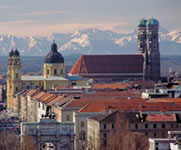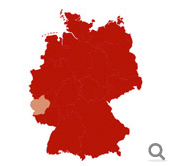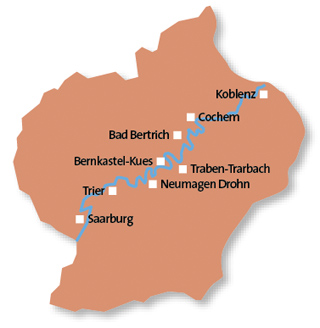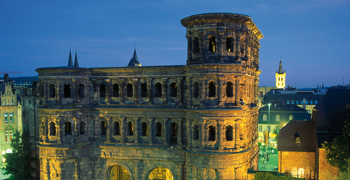
Historical Towns
- Historical towns in Brandenburg
- Cathedral Towns and Cities in Saxony-Anhalt
- The innovative Anhalt-Wittenberg Region
- Enchanting towns in the Harz
- The beautiful towns and cities in Saxony
- Towns and cities of culture in Thuringia
- Beautiful towns of Franconia
- East Bavarian traditional towns
- Alpine towns in the Allg�u
- The eastern Akpine Foothills and their towns
- Towns and villages in the western foothills of the Alps
- Mediterranean towns on Lake Constance
- Towns in the Swabian Alb
- Unspoilt towns in the Black Forest
- Towns for refined tastes in the Heilbronner Land
- Towns in the Odenwald
- Wine towns in Rheinhessen
- Saarland, a region of contrasts
- Romantic towns in the Hunsr�ck and Nahe Regions
- Idyllic towns and villages in the Moselle Region
- The Ahr Rhine Eifel holiday region
- Wine towns on the Romantic Rhine
- Modern towns and cities in the Bergisches Land Region
- The Lahn Valley and its fairytale towns
- Historical towns in Kurhessisches Bergland
- Sauerland's scenic towns
- Fairytale towns in the Weserbergland Hills
- Majestic towns in the M�nsterland Region
- The nine stars of Lower Saxony
- North and East Frisian Islands
- Vibrant Schleswig-Holstein
- Maritime towns along Mecklenburg's Baltic Coast
- Historical Hanseatic Towns
- Germany's Baltic Sea Islands
- The Mecklenburg Lakes
Contact and information
Wine tip
Moselle
Moselle is widely believed to be Germany's oldest wine region. Around 5,000 growers tend more than 9,000 hectares in 125 wine villages. They are justifiably regarded as riesling specialists. This superior, late-ripening variety thrives in the conditions here, yielding wines with enormous depth of flavour but relatively low alcohol content. The region is also renowned for its superb dessert wines which achieve record prices at auction every year.
Moselle is widely believed to be Germany's oldest wine region. Around 5,000 growers tend more than 9,000 hectares in 125 wine villages. They are justifiably regarded as riesling specialists. This superior, late-ripening variety thrives in the conditions here, yielding wines with enormous depth of flavour but relatively low alcohol content. The region is also renowned for its superb dessert wines which achieve record prices at auction every year.
Between the Moselle and the Saar rivers wine-making traditions and Roman heritage

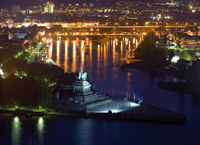
The Roman Road
The Roman conquerors left a rich legacy in the Moselle region: a Roman settlement in Koblenz, stone reliefs and the wine ship sculpture in Neumagen and the Porta Nigra in Trier, a town said to be older than the cradle of the Roman Empire and now a UNESCO World Heritage site. All around the area where the Moselle meets the Rhine, you will find a variety of villas and manor houses, temples and burial sites, historical wine presses and limeworks that date back to Roman times. Following the Roman Road is a fascinating way to explore around 120 ancient attractions along the Moselle and Saar rivers, in the Hunsrück and Eifel regions, in the Saarland and in Luxembourg.Two millennia of wine growing
In the Moselle region, vineyards cover hills up to 285 metres high, clinging to the steep slate slopes at gradients of up to 68 degrees. Dramatic terraces hewn from the hillside are the hallmarks of the region, while gentle valleys complete the picture of an incomparable wine-growing landscape. The hills frame the Moselle, Saar and Ruwer rivers which have carved a path through the Rhenish slate mountains. There's plenty of opportunity to sample the local wines. Wineries run wine seminars as well as the classic winetasting sessions, educating the palate and acquainting visitors with wines and the ways in which they are made. Popular scenic routes through the vineyard areas include the Moselle Wine Route from Perl to Koblenz, the Saar-Riesling Route from Konz to Serrig and the Ruwer-Riesling Route.Moselle.Discovery.Route
Walking and cycling are the best ways to explore the Moselle region's natural beauty and historical sights. The Moselle Cycle Route runs for 270km along a wellmaintained, level network of cycle paths, and the 50 cultural and themed trails that make up the Moselle.Discovery.Route offer exciting and adventurous walking tours with fabulous views whichever way you look.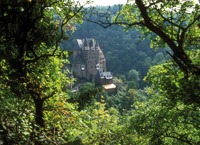
Eltz Castle
The Middle Ages also left their mark on the Moselle region. The area between Cochem and Koblenz is also known as Burgenland (castle country) because of its many medieval castles. One of the most beautiful is Eltz Castle, which looks like something from the pages of a fairytale. Built in the 12th century, it has survived every battle and war unscathed, including the French revolution.Culinary tales from the Moselle
Boemund II, the Bishop of Trier, lay dying of a serious illness. When the doctors could do no more, a vintner was summoned, who gave him a cask of wine from his best vineyard. The wine is said to have cured the bishop and prompted him to declare:"This is the true doctor!" From that day on, the Moselle vineyard in question has been known by the name Doctor. Stories such as this abound in the region. The wines are often served with traditional local fare such as wingertseintopf (pork ribs with sauerkraut and bacon) or lighter dishes of freshly caught trout, pike or pike-perch. One speciality that is only available in autumn is the federweisser new wine that has only just begun to ferment served with zwiebelkuchen (bacon and onion flan).
Travel Planner
Select an option...
Romance and charm
Set in one of Europe's most beautiful winegrowing landscapes, the Moselle Music Festival offers an unforgettable blend of music, personalities and of course wine in fabulous venues across the region.
Food and drink
Stroll among the vineyards and scale rocky crags along via ferrata, cook as the Romans did at ancient sites and enjoy wine at literature evenings in historical wineries all part of the new series of events known as the Moselle WeinKulturZeit.
History and tradition
Trier Antiquity Festival has been putting on plays, concerts and operas based on ancient texts in the historical amphitheatre since 1998. This extraordinary programme draws visitors from far and wide.
Nature and scenery
Explore the Moselle region from the water, by canoe or rowing boat along the Moselle River Route. Admire the proud castles and impressive ruins high above the river, the dramatic cliffs and the picturesque riverbank scenery.




